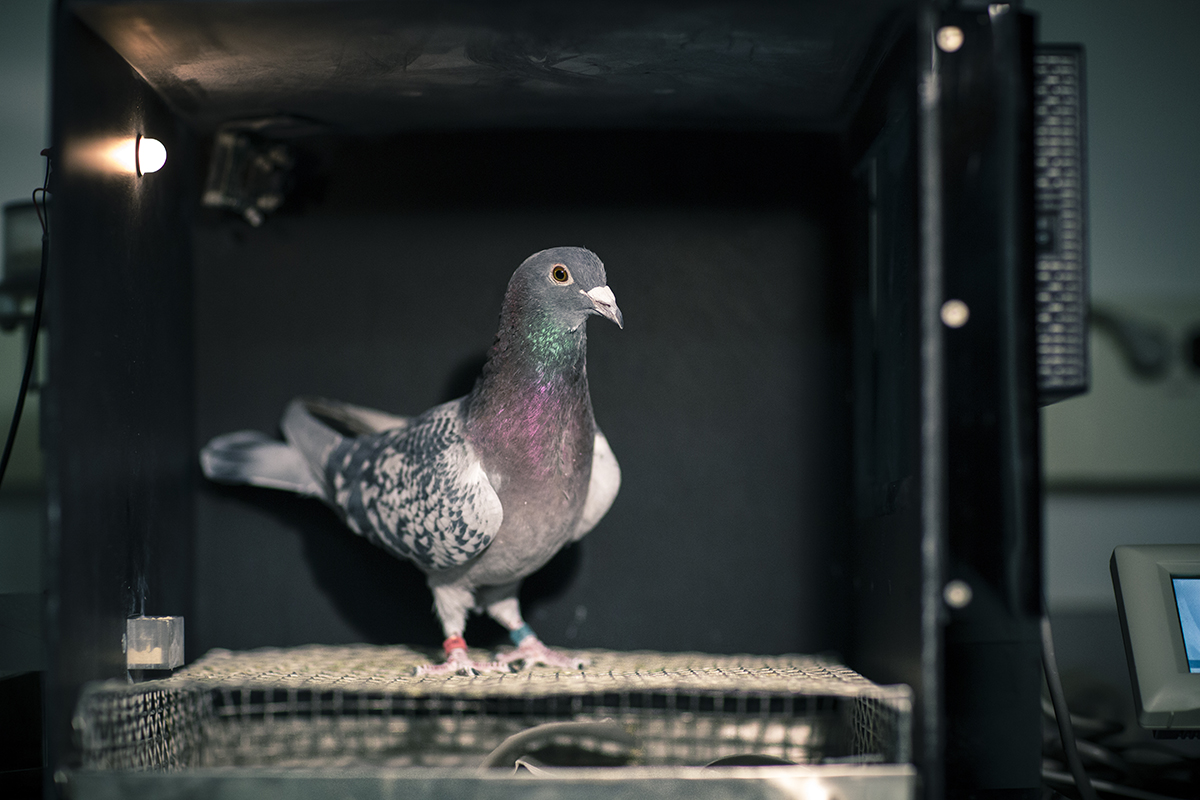Brainy Birds: Pigeons Can Understand Distance and Time

Pigeons are such a common sight on city sidewalks around the world that most people don't spare them a second glance. But these urban birds aren't just experts at adapting to metropolitan life — they're also capable of grasping abstract concepts such as space and time, according to a new study.
Researchers recently discovered that pigeons can recognize how much space an object takes up, and how long it is visible, a task that humans accomplish using the brain region known as the cortex.
But pigeons — and all birds — lack a developed cortex. The scientists found that the pigeons use a different brain region to perceive space and time, and yet they process this information in a manner similar to that found in humans and other primates. [10 Amazing Things You Didn't Know about Animals]
Birds are known to perform "exceptionally well" at certain tasks that in mammals are linked to cortex function, according to the study. And pigeons have proved time and again that they are capable of cognitive achievements typically associated with mammals' more complex brains. Previous research has shown that pigeons can recognize human faces, solve statistical problems, and even distinguish between real English words and nonsensical gibberish, Live Science previously reported.
For the new study, scientists presented pigeons with experiments used to test humans and nonhuman primates' ability to perceive space and time. The pigeons were trained to select visual symbols on a computer screen in response to seeing lines of different lengths — 2 inches or 9 inches (6 or 24 centimeters) — and lines of similar length that were visible for different durations, either 2 seconds or 8 seconds. Correctly identifying a line as "short" or "long" in length or duration delivered a food reward.
Not only were the pigeons able to correctly identify the line images, their performance during amended tests offered additional insights into how avian brains process abstract information such as space and time. When the scientists introduced variations in the tests — line lengths and durations that weren't included when they trained the birds —they saw that the pigeons' perceptions of the two states were linked. In other words, changes to the length of the lines affected their perception of the duration, a phenomenon that had already been observed in monkeys, the study authors wrote.
Their findings suggest that not only does this type of perception not necessarily require a cortex, but that evolution may have shaped the comparable brain region in birds — the pallium — to process information in a similar manner to the cortex, even though they are structurally very different.
Sign up for the Live Science daily newsletter now
Get the world’s most fascinating discoveries delivered straight to your inbox.
It is also likely that this ability is more widespread among animals than previously suspected, the researchers reported.
"Those avian nervous systems are capable of far greater achievements than the pejorative term 'bird brain' would suggest," study co-author Edward Wasserman, a professor of experimental psychology in the Department of Psychological and Brain Sciences at the University of Iowa, said in a statement.
"Indeed, the cognitive prowess of birds is now deemed to be ever closer to that of both human and nonhuman primates," Wasserman said.
The findings were published online today (Dec. 4) in the journal Current Biology.
Original article on Live Science.

Mindy Weisberger is an editor at Scholastic and a former Live Science channel editor and senior writer. She has reported on general science, covering climate change, paleontology, biology and space. Mindy studied film at Columbia University; prior to Live Science she produced, wrote and directed media for the American Museum of Natural History in New York City. Her videos about dinosaurs, astrophysics, biodiversity and evolution appear in museums and science centers worldwide, earning awards such as the CINE Golden Eagle and the Communicator Award of Excellence. Her writing has also appeared in Scientific American, The Washington Post and How It Works Magazine. Her book "Rise of the Zombie Bugs: The Surprising Science of Parasitic Mind Control" will be published in spring 2025 by Johns Hopkins University Press.









